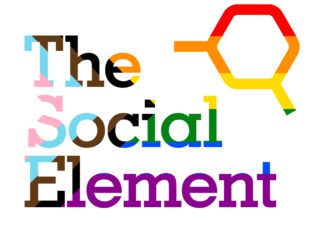Social media platforms like audio platform Clubhouse and photo sharing app Dispo made headlines this year for their exclusive, invite-only membership model. Their exclusive nature makes membership into these apps a coveted status, with Clubhouse invites listed for up to $1,000 on Ebay. Is it all just for hype, or is there real value in social media exclusivity? Where do brands fit into the equation (if they can snag an invite)?
The FOMO factor
Exclusive social media platforms tap into the scarcity effect, or the cognitive bias that makes us place a higher value on things that are scarce or limited. While everyone and their mother (pretty much literally) has Facebook, the fact that you have to be invited to join a social platform automatically ups its “cool factor.” The pandemic put a pause on exclusive spaces in the physical world: think VIP sections, fashion shows, and first-class seating.
Exclusive social media platforms may have met a desire for “in-crowd” status in a time when interactions were mostly taking place online.
The potential for increased privacy
Mainstream social media platforms, most notably Facebook, have faced public and legislative criticism for how they mine and sell user data. A recent survey found that more than two-thirds of adults report being concerned about the privacy and security of Facebook. The appeal of certain exclusive social media platforms is that they are less likely to collect user data to then use for targeted advertising. Of course, selling user data for advertising purposes is how Facebook became the social media giant they are today. If exclusive social apps want to maintain their users’ privacy, they will need to figure out a different way to monetize their platform.
Is exclusivity sustainable?
While it feels like everyone’s had a Facebook account forever, it started off being exclusively available for Harvard students. It then opened up to Ivy League students, and then to the general public. It’s likely that social media apps that start off exclusive will eventually follow in Facebook’s footsteps and eliminate barriers to entry. There are many benefits to a large user base: greater awareness, more feedback, and, perhaps most importantly, greater reach for sponsored content.
Even if exclusive social media apps don’t collect user data to show targeted ads, they may eventually allow brands to buy sponsored content.
They may also consider allowing creators to earn money on the platform, either on an affiliate or direct payment basis. It’s also worth thinking about how social commerce fits into these exclusive platforms. It’s been on the rise over the last year, so there may be potential for exclusive shopping experiences.
Where do brands fit in?
By narrowing down its user base, exclusive platforms offer brands an opportunity to reach a specific audience in an intimate setting. The first obstacle brands can face, of course, is meeting the requirements to join these platforms. Depending on the platform culture, it may make sense for brands to have someone who works for them join the platform as an ambassador. For invite-only platforms, a social media or PR representative from your team can also reach out to their network to get an invite for the branded account.
If there are social media apps that come into the picture that have fee-based or otherwise more rigorous barriers, brands should first consider whether it makes sense to try to join. For instance, Dispo caters to a Gen-Z audience; if your brand has an older customer base, it may not be worth the effort to try to join.
Once you become a member, brands browse topics and see where they can join the conversation. Putting out engaging, relevant content on these platforms has the potential to reach your niche audience and grow a loyal following. Because interactions take place in a closed setting, members of exclusive platforms may feel more comfortable interacting authentically with brands they follow. If advertising does become available, your content has the potential to reach a narrowed-down, targeted audience.





